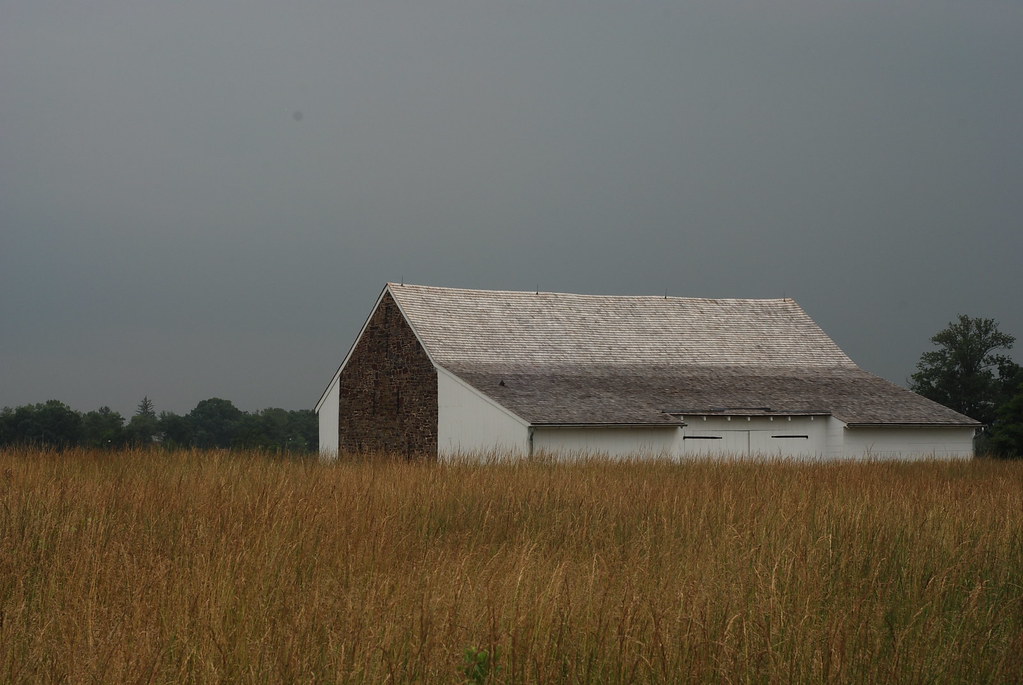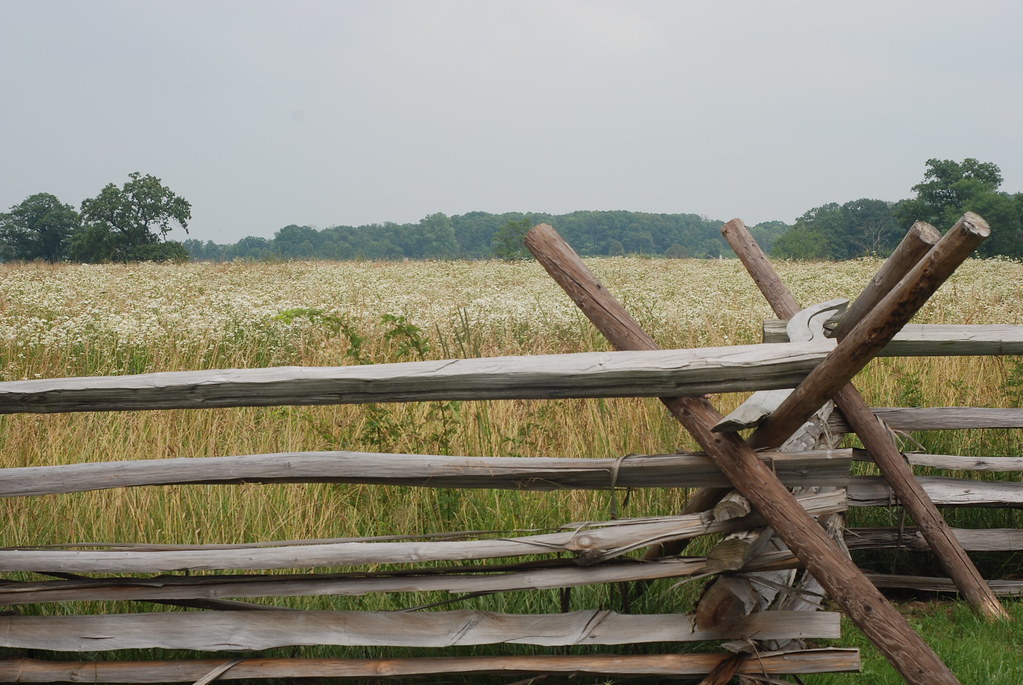
The battlefields of Gettysburg are beautiful. Some say that even during the severest droughts they stay lush and green. The fields used to be all farmland—wheatfields, peach orchards. Many barns and farm houses remain, maintained by the park service. Some are even lived in. The land is no longer farmed, and wild grass grows high across the fields interrupted only by wooden snake rail fences. Everywhere memorials and monuments rise above the grass to honor regiments and generals who fought on these grounds.

Following maps we tried to imagine different stages of the battle from different viewpoints. We tried to see the ground the same way General John Buford saw it when he first arrived at the Seminary Ridge. We walked to the Little Round Top and looked down its south slope, where Colonel Joshua Chamberlain’s men fought off multiple infantry charges coming over the rocks. We walked along the tree line where General Longstreet’s men would have been forming lines before their march towards the high ground on the last day of the battle. Without coming and seeing the land, it is impossible to imagine the tragically large scale of the battle.

 The battlefields of Gettysburg are beautiful. Some say that even during the severest droughts they stay lush and green. The fields used to be all farmland—wheatfields, peach orchards. Many barns and farm houses remain, maintained by the park service. Some are even lived in. The land is no longer farmed, and wild grass grows high across the fields interrupted only by wooden snake rail fences. Everywhere memorials and monuments rise above the grass to honor regiments and generals who fought on these grounds.
The battlefields of Gettysburg are beautiful. Some say that even during the severest droughts they stay lush and green. The fields used to be all farmland—wheatfields, peach orchards. Many barns and farm houses remain, maintained by the park service. Some are even lived in. The land is no longer farmed, and wild grass grows high across the fields interrupted only by wooden snake rail fences. Everywhere memorials and monuments rise above the grass to honor regiments and generals who fought on these grounds. Following maps we tried to imagine different stages of the battle from different viewpoints. We tried to see the ground the same way General John Buford saw it when he first arrived at the Seminary Ridge. We walked to the Little Round Top and looked down its south slope, where Colonel Joshua Chamberlain’s men fought off multiple infantry charges coming over the rocks. We walked along the tree line where General Longstreet’s men would have been forming lines before their march towards the high ground on the last day of the battle. Without coming and seeing the land, it is impossible to imagine the tragically large scale of the battle.
Following maps we tried to imagine different stages of the battle from different viewpoints. We tried to see the ground the same way General John Buford saw it when he first arrived at the Seminary Ridge. We walked to the Little Round Top and looked down its south slope, where Colonel Joshua Chamberlain’s men fought off multiple infantry charges coming over the rocks. We walked along the tree line where General Longstreet’s men would have been forming lines before their march towards the high ground on the last day of the battle. Without coming and seeing the land, it is impossible to imagine the tragically large scale of the battle.




No comments:
Post a Comment